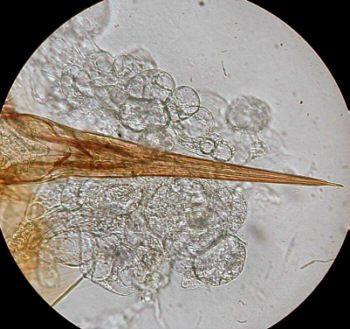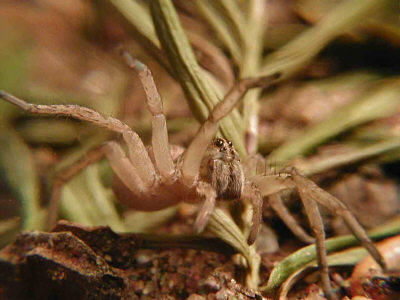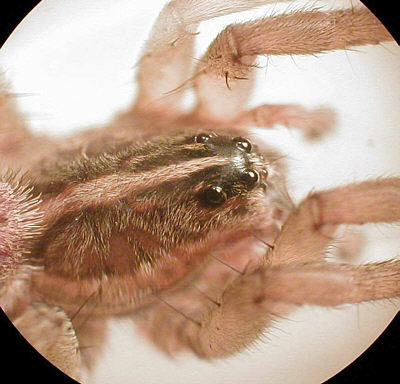The enclosed images have been taken with my recently purchased Olympus D-360L digital camera (a fixed focal length, autofocus model). I have found that the best settings for using the camera with the microscope are; Auto ISO, with Auto or Incandescent for the white balance setting (the latter when using a tungsten lamp). For the exposure compensation setting, I have found that +0.5 to +1 stops seems to work best for my set-up. You may want to tinker with this setting depending on the specimen being examined, type of lighting etc. (My microscope has no substage condenser or diaphragm).
Note that in most cases, the regular focus setting (i.e. three feet - infinity) rather than the macro mode worked most consistently. (Using macro seems to result in more glare spots in the image, and made it much harder to properly align the camera with the scope.) Also note that the camera finds it hard to get focus lock when used over the microscope. But I've found that as long as the image is sharp in the viewfinder, the images should come out OK. So just ignore the flashing light indicating lack of focus lock. Go ahead and shoot.
Comments to the author David Young welcomed.
Image gallery by the author.
(Editor's
note: to fit in the web page, the author's master images have
been resized
and sharpened a little to correct softness introduced by
resizing.)

Rotifer

Moth scale

Ant (Myrmica) sting
The
following images are of a small wolf spider I have housed in
a jar.
The images were taken using a small magnifying lens in front
of the camera
lens held in place with putty. The camera focus was set to
macro mode.
To
make the background, I placed a little sand in the bottom
of a mason jar, tossed in a few sprigs from an evergreen
bush ... and camera angles did the rest.

Wolf spider

Wolf spider

Wolf spider detail, taken using a dissecting microscope.

Wolf spider fang, compound microscope.
Related Micscape articles: Paul James has shown that a similar European digital camera, the Olympus C-830L, is also capable of fine macro and microscopic images; see the Micscape Article Library.